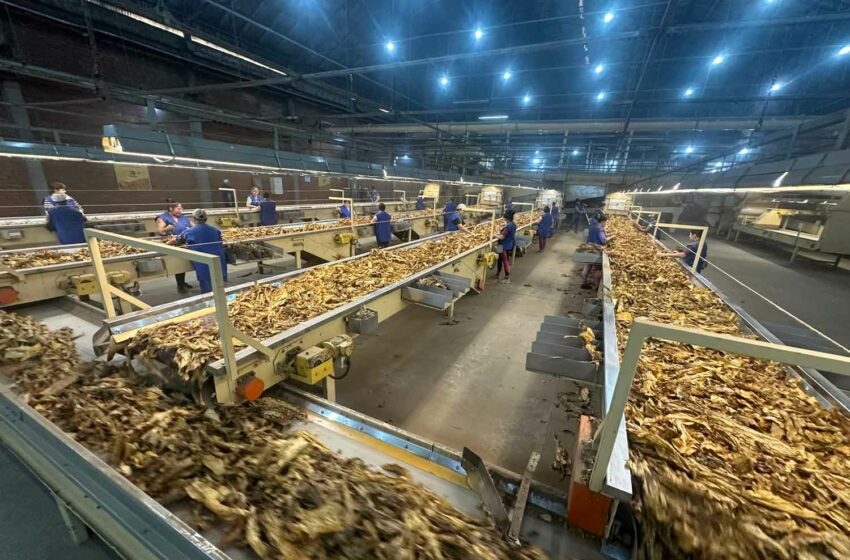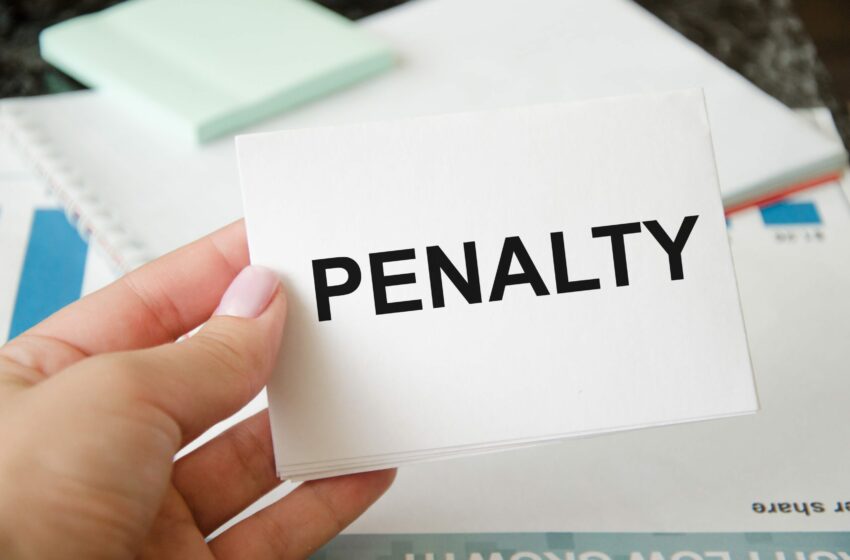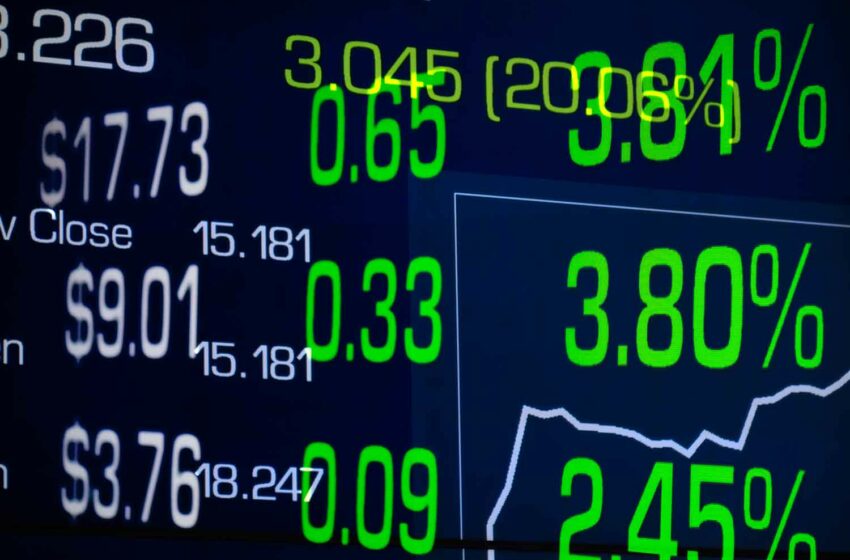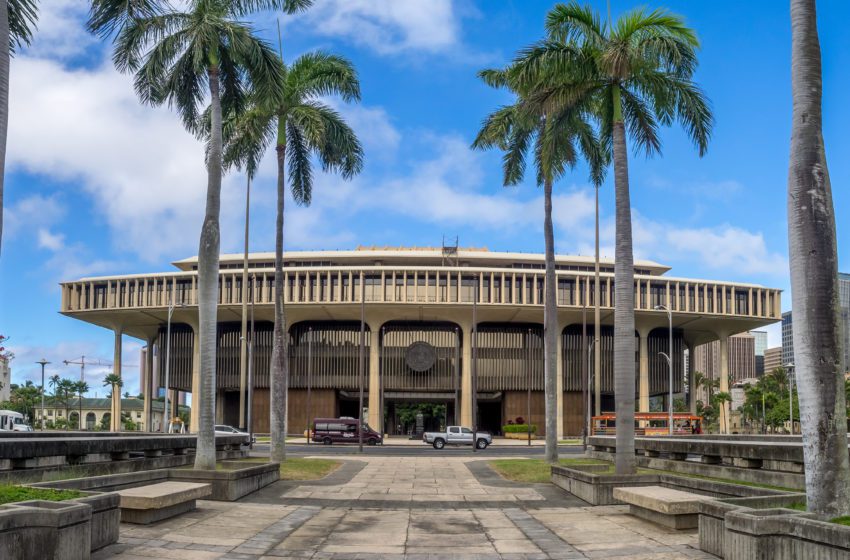Buyers have been paying record prices to secure their shares of Brazil’s smaller-than-expected tobacco crop.
By Taco Tuinstra
On March 21, a ferocious storm tore through Brazil’s southernmost state, Rio Grande do Sul. The wind flattened numerous outdoor pavilions at the Expoagro exhibition in Rio Pardo, forcing its organizer, tobacco growers’ association Afubra, to close the event for a day and repair the damaged stands. In a more welcome development, the tempest brought relief from the heat wave that had been making life tough for those toiling in the region’s numerous fields and leaf processing facilities.
But while Expoagro reopened to large crowds and the temperature dropped to more tolerable levels in the wake of the storm, other pressures on the industry continued unabated throughout the selling season. Alliance One Brazil Leaf Production Director Samuel Streck, who has worked in the business for two decades, described this year’s crop as the most challenging in his career, and his view was echoed by many other industry veterans throughout the Brazilian tobacco sector during Tobacco Reporter’s visit to the region in March.
A significantly smaller-than-expected crop, acute labor shortages and record-high prices, along with heightened scrutiny of tobacco farming in the wake of the 10th Conference of the Parties (COP10) to the Framework Convention on Tobacco Control (FCTC), have kept the Brazilian leaf sector on its toes this year.
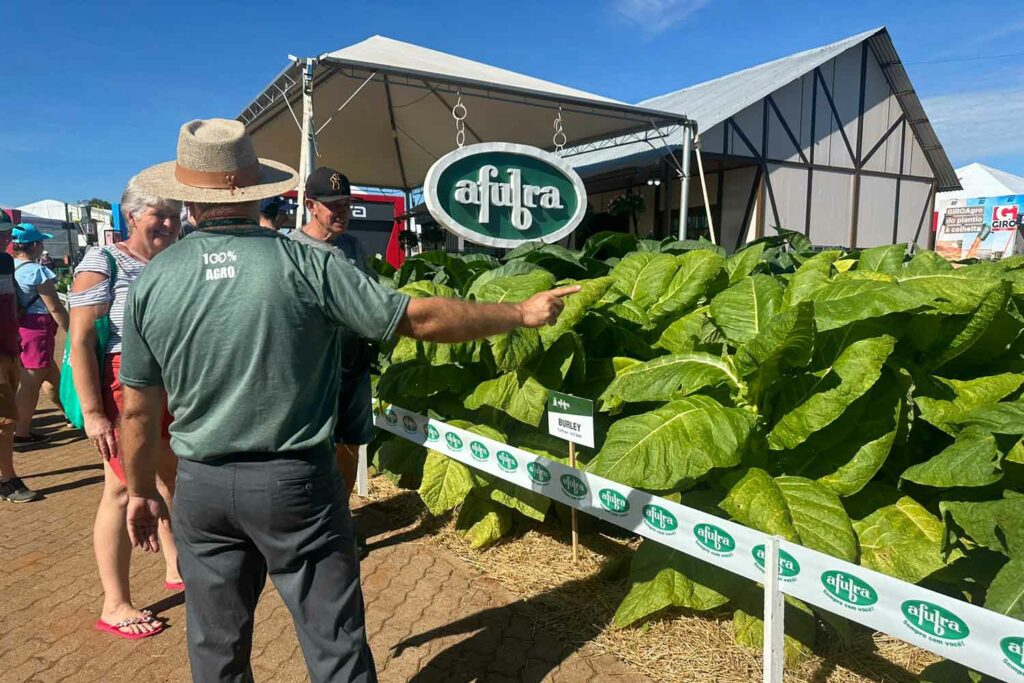
Low Yields, High Quality
It wasn’t supposed to be that way. When planting for the 2023-2024 crop started in May last year, the industry predicted a volume increase of about 10 percent over the previous season, when the country’s growers harvested some 605.7 million kg of all tobacco types, according to Afubra.
At first, the weather conditions appeared to validate that assessment, but then El Nino hit. The recurring weather phenomenon, which typically boosts precipitation in South America, had been anticipated but turned out much more intense than normal. From mid-July until the end of November, El Nino dumped unprecedented volumes of rain on southern Brazil, leading to flooding in lower lying areas. Accompanied by many sunless days, the wet conditions depressed yields not only in Rio Grande do Sul but also in Santa Catarina and Parana, the three southern states that together account for 98 percent of Brazil’s tobacco production. (The remaining volumes grow primarily in Bahia and are used to make cigars.)
Crop | Hectares planted | Production (million kg) | Leaf export earnings |
2023 | 261,740 | 605.7 | $2.66 billion |
2022 | 246,590 | 560.18 | $2.24 billion |
2021 | 273,356 | 628.49 | $1.31 billion |
2020 | 290,397 | 633.02 | $1.47 billion |
2019 | 297,310 | 664.36 | $1.99 billion |
2018 | 297,460 | 685.98 | $1.85 billion |
2017 | 298,530 | 705.93 | $1.96 billion |
2016 | 271,070 | 525.22 | $2.01 billion |
2015 | 308,260 | 697.65 | $2.06 billion |
2014 | 323,700 | 731.39 | $2.35 billion |
2013 | 313,575 | 712.75 | $3.09 billion |
Sources: Afubra/SindiTabaco | |||
Instead of a 10 percent boost, the industry was now looking at a 20 percent drop in volume from 2023. By late March, Afubra was expecting about 470 million kg of flue-cured Virginia (FCV) and roughly 40 million kg of burley.
But even as the excessive rainfall slashed yields, it worked wonders for leaf quality. Brazil’s 2024 crop boasts good color, uniformity and smoking properties, according to buyers. High oil levels give this year’s leaf a better visual appearance than in 2023. What in the previous year was predominantly light orange to orange is this year orange to deep orange, observed Kohltrade in a recent crop report. “It’s perfect, in my opinion,” said Kohltrade Account Executive Simone Velasques.
And it’s not just looks that set this crop apart; the tobacco smokes exceptionally well, according to Eduardo Renner, president and CEO of CTA-Continental. “That’s also the feedback we are getting from customers,” he said. On the flipside, the rain also suppressed nicotine levels in this year’s tobacco. According to Jay Barker of YTL, the excess rainfall has resulted in below-average chemistries across the board. Because the wet season followed three consecutive dry ones, the gap in nicotine levels between the current crop and the previous one is greater than normal, which may challenge some customers in creating their desired blends.

Chasing Tobacco
The combination of low volume and high quality, along with a persisting post-Covid-19 tobacco shortage at the global level, sparked a scramble among tobacco companies in Brazil to secure their requirements. As a producer of sought-after flavor tobacco, Brazil has only two true competitors on the world market—Zimbabwe and the United States. Zimbabwe, where El Nino brought drought instead of rain, is also looking at a smaller crop this year (albeit from a record volume in 2023), according to that country’s Tobacco Industry and Marketing Board. United States FCV production, meanwhile, has been stable for three years at just below 140 million kg, TMA figures suggest.
The shortage has been aggravated by the fact that last year some customers didn’t buy everything they needed because they were expecting cheaper tobacco this year. Coming out of the pandemic, many customers adopted a wait-and-see approach, carefully managing their stocks to avoid buying at high prices. Now, with inventories running out, those who didn’t buy last year had to buy this year.
According to local traders, Brazil’s leading tobacco buyers alone needed more leaf than the entire volume that was expected to come to the country’s market in 2024. Throughout the season, the vertically integrated companies—BAT, Philip Morris International, Japan Tobacco International and China Tobacco—were buying far above list prices, paying top rates for all grades and leaving independent traders with no choice but to follow their lead.

The result has been an unprecedented escalation of leaf prices and an acceleration of deliveries. In mid-March, farmers were receiving up to $5.50 per kilogram of green tobacco, according to Kohltrade. For processed leaf, customers were paying up to $9.50 for grades that cost perhaps $5 only three years ago. “Prices are up, up, up,” observed Afubra President Marcilio Drescher.
Daison A. Kohl, who grows 2.7 hectares of tobacco in Vale do Sol, said he has never in his time on the farm witnessed such high prices and such fierce competition. Unlike many of his neighbors, Kohl contracts only with one buyer. Yet throughout the buying season, his phone rang nearly daily with representatives from other companies asking him to sell his leaf to them instead.
Kohl had to disappoint them all. “It doesn’t matter how much they offer; the tobacco is just not there,” he said. Merchants have been telling their customers a similar story. Whereas in a more typical year, they may exaggerate and say, “there is no tobacco” as a price negotiation tactic, this season it is simply a statement of fact.
The scramble for tobacco has also greatly accelerated the purchasing process, leaving some receiving stations struggling to keep up with the influx of leaf. At the time of Tobacco Reporter’s visit, leaf merchants were expecting farmers to run out of tobacco by the end of April—two months earlier than in 2023. “Customers who come late to Brazil may not find what they are looking for,” warned Velasques.

Labor Scarcity
For the growers, the 2024 marketing season has been a mixed bag. Even with record per-kilo prices, the additional income may not make up for the reduced weight that they are bringing to market, according to Afubra. Kohl, who suffered a 26 percent drop in yield from last year, said that as long as the companies continue paying above list prices, his operation will remain profitable this year. “But if they resort to paying list prices, it will be a problem,” he said.
While the cost of inputs such as fertilizer have been coming down from their Covid-19-induced and Ukraine war-induced spikes, a long-running shortage of labor has worsened in recent years, impacting both farmers and tobacco factories. But whereas tobacco buyers can mechanize operations such as rack loading and stripping, farmers have fewer options. With an average property size of 10.5 ha and an average area devoted to tobacco of only 3.29 ha, according to Afubra, the typical tobacco farm in southern Brazil is simply too small to justify the investment in equipment. What’s more, many of the tobacco growing activities lend themselves poorly to mechanization. There are no machines for delicate tasks such as sucker control and topping, for example.
Meanwhile, aware of their growing scarcity, farmhands have started driving harder bargains. In Vale do Sol, they have organized themselves in collectives, forcing farmers to negotiate with groups instead of individuals, according to Kohl. To guarantee a group’s labor throughout the growing season, he must pay a premium on top of the already inflated salaries.
Determined to control their cost of production, Kohl and his wife, Solange, carry out many of the tobacco farm activities, including land preparation, themselves. They hire labor for the first, second and third reapings, when the leaves are still thin and easily damaged and speed is of the essence. “If we don’t harvest quickly during that time, we will lose quality,” said Kohl. From the fourth reaping onward, the tobacco is thicker and less fragile, allowing the Kohls to harvest by themselves and save money on labor.
Their workload has been lightened a bit by a recent switch from bundles to loose leaf. In the past, growers in Brazil would classify their tobacco according to quality and color and then tie the leaf into bundles—a laborious process that could take up to two months. As demand increased, some buyers told farmers to skip this step and deliver the tobacco in loose form instead. The practice spread rapidly and has now been adopted by all merchants. After drying the tobacco, the farmer can take his tobacco directly from the barn to the bale and put it on a truck, not only saving time and labor but also greatly accelerating the speed of delivery.
While some buyers at first worried about how the new practice would impact processing, those concerns turned out to be manageable. “Loose leaf is not necessarily the best way to receive tobacco in terms of the feeding table and the presentation of each grade, but we quickly realized it’s possible,” said Streck. According to Renner, the process remains the same. “You can still tip and thresh the leaf because it is straight laid.”
Farmer Succession
The Kohls are happy with the change to loose leaf, as it allows them to focus on other farm activities. As they work their fields, they are occasionally joined by their oldest son of 34, who has no interest in farming but feels a duty to help on some evenings after he’s done with his day job. Their middle son (25) by contrast “does not even want to see the tobacco,” according to Kohl, while their youngest (8) is too little to work on the farm. (Brazilian law requires tobacco workers to be at least 18 years of age, and following intense industry-led awareness campaigns, the country’s sector today is considered a role model in in eradicating child labor.)
The Kohls’ family dynamics hint at another challenge facing Brazil’s tobacco business: farmer succession. Like their counterparts around the world, many rural youngsters in Brazil aspire to work in the city, which has led to an exodus of skills and talent from the countryside. “Keiner will die Finger mehr dreckig machen”—nobody wants to soil their fingers anymore—observes Solange, who, like many people in southern Brazil, is more conversant in German than English as a foreign language.
A 2023 survey conducted by the Federal University of Rio Grande do Sul at the request of the Interstate Tobacco Industry Union (SindiTabaco), revealed that with an average monthly income of BRL11,755.30 ($2,234.75), tobacco farming families in southern Brazil are relatively well off, earning considerably more than the average Brazilian family. The Kohls, for example, live in a spacious, well-built home equipped with plenty of conveniences and some luxuries, including a small swimming pool. Within agriculture, too, the golden leaf continues to generate the best returns, according to industry sources, contradicting the narrative pushed by certain nongovernmental organizations that tobacco leaves growers in poverty.

But while the earnings from tobacco farming exceed those of other crops, the golden leaf is also more demanding. Unlike some other agricultural products, the farmer cannot just plant it and watch it grow. A good tobacco farmer, notes Kohl, must constantly keep an eye on the plants. “The weather can change things very quickly,” he said. “If rain comes, it puts the leaves on the plants and—boom—they become big overnight. And if you don’t go in and take the flowers off and the wind comes, it can topple the plants.”
With no one lined up to take over the farm, the Kohls’ tobacco volumes will disappear from Afubra’s production statistics after they retire. “We have another 10 years, and then we’ll be gone,” said Kohl. Unfortunately for tobacco buyers, their situation is not exceptional. According to the University of Rio Grande do Sul study, 27 percent of the growers in southern Brazil have no succession plan.
Acutely aware of the demographic drain, the tobacco industry has been looking for ways to keep young adults in the countryside. Originally set up by SindiTabaco and its associate companies to help combat child labor in rural Brazil, the Growing Up Right Institute (also see “Alternatives for Adolescents,” Tobacco Reporter, April 2021) now also runs programs educating young people on the verge of adulthood about the opportunities on the farm. By teaching youngsters how to optimize farm operations through technology and professional management, the institute hopes to convince them that they can live good lives in the countryside.
According to program manager Nadia Fengler Solf, the initiative has had some success. Upon graduation from the program, she said, many students have a completely new perspective on the possibilities in the countryside. Some decide to develop their family properties, investing in new technologies and diversifying their business, while others elect to pursue degrees in agriculture.

COP Fallout
But even as the industry is working to keep farmers interested in tobacco, others are campaigning to steer them away. At COP10 in Panama, delegates vowed to step up action on Articles 17 and 18 of the treaty, which call for the promotion of economic alternatives for tobacco workers and the protection of the environment and health of tobacco workers, respectively. According to a speaker at this year’s Americas Regional meeting of International Tobacco Growers’ Association in Santa Cruz do Sol, the Panama COP could be the first to have a direct impact on the farm.
SindiTabaco President Iro Schunke dismisses the talk about alternative crops in Southern Brazil as unrealistic. “If we had another crop that generates the same income, farmers would have switched long ago on their own accord,” he said. Part of the problem, he explains, is the small average size of farm properties. “To replace the money from one hectare of tobacco, you need to grow 7 hectares of soybeans or 10 hectares of maize.” The pressure for diversification, meanwhile, is unnecessary, according to Schunke. “Tobacco farmers in Brazil are diversified already,” he said. While generating between 60 percent and 70 percent of the average grower’s income, tobacco claims only 20 percent of their property, according to SindiTabaco. Part of the money earned from tobacco is used to plant supplemental crops.

“If we had another crop that generates the same Income, farmers would have swItched long ago on theIr own accord.”
Iro Schunke, president, SindiTabaco
Brazil was one of the most vocal proponents of stricter tobacco controls at COP10, a position that Schunke considers odd, given that leaf tobacco accounts for 11 percent of Rio Grande do Sul’s exports, employs more than half a million farmworkers and earned Brazil an average of more than $2 billion annually through exports over the past 10 years (see chart). Schunke attributes the government’s tough stand to pressure from nongovernmental organizations and the exclusion of tobacco stakeholders from health policy debates along with an ideological aversion to capitalism.
Some suspect the government’s position is driven partially by ignorance, with bureaucrats in faraway Brasilia unaware of how much rural communities in the south of the country depend on the golden leaf. “Although hostility against tobacco from agencies all over the globe is the new status quo and the path of least resistance, the fact is, the economic impact to the communities where tobacco is prevalent is very significant,” says Barker.
Santa Cruz do Sul Mayor Helena Hermany believes that Brazil’s national health surveillance agency, Anvisa, grossly underestimates and misrepresents the industry’s economic significance. More than 50 percent of the city’s revenue comes from tobacco, she told participants in the ITGA Americas meeting. “If tobacco does well, we all do well,” she said.

If tobacco does well, we all do well.
Helena Hermany, mayor of Santa Cruz do Sul, Rio Grande do Sul, Brazil
It terms of sustainability, the tobacco industry is also performing much better than it is given credit for. “We are doing quite well in terms of soil protection, reforestation and the prevention of child labor,” said Drescher. For example, Brazilian farmers are self-sufficient in curing energy, sourcing wood from dedicated plantations rather than indigenous trees.
According to Renner, sustainability is already an integrated part of everything the tobacco industry does. “Whatever we supply must cover these three capital letters,” he said, referring to the environmental, social and governance considerations that the abbreviation stands for. “What we do for our people, our clients, in our operations and in the communities we work with … our suppliers need to do for us.”
As they prepare for next season in the wake of this year’s short crop, industry stakeholders are keen to avoid a wild swing in the other direction. Emboldened by the high prices and keen to recover their lost volumes, many growers are likely to increase their plantings for the 2024–2025 season. Kohl, by contrast, is cautious, worrying that a surplus next year will depress prices, and he plans to plant the same hectarage as last year.
Others predict that the era of cheap Brazilian tobacco is over, not only due to demand-and-supply factors but also as a result of the considerable investments the local industry has made in sustainability. These investments should serve Brazil well as it moves into the new era, giving the country a competitive advantage against origins with less robust practices. At the same time, leaf merchants insist that the effort should be supported throughout the supply chain. ESG initiatives, after all, come at a cost that should be reflected in leaf prices. “It must be sustainable for all parties,” insisted Renner.


